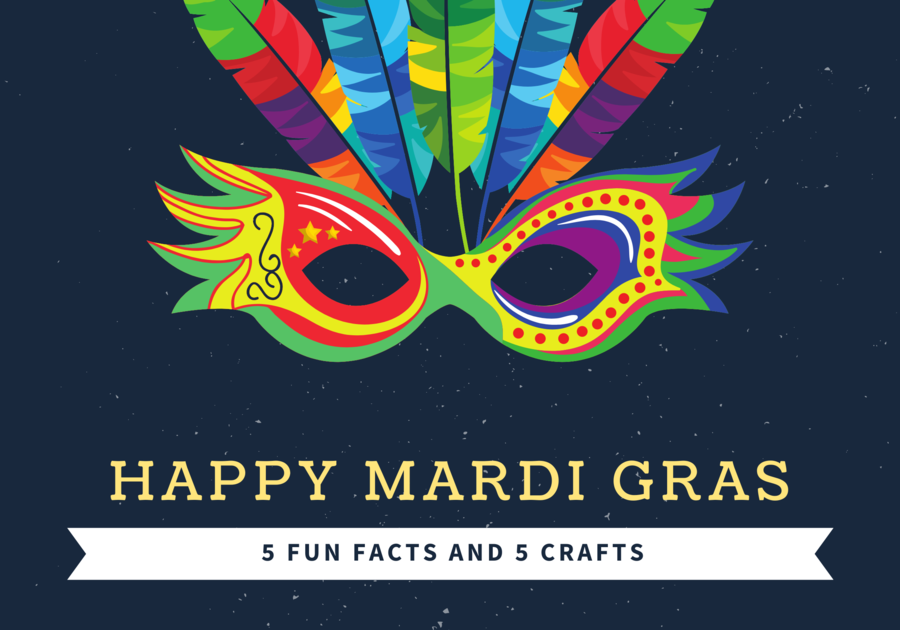- Mardi Gras Masks:
- Materials: Paper plates, markers, feathers, sequins, glue, elastic cord.
- Instructions: Cut a paper plate in half and have kids decorate the rounded edge as a mask using markers, feathers, sequins, and glue. Attach an elastic cord to each side to create a wearable Mardi Gras mask.
- Beaded Necklaces:
- Materials: Colorful beads, pipe cleaners.
- Instructions: Have kids string colorful beads onto pipe cleaners to create their own Mardi Gras bead necklaces. Encourage them to use the traditional Mardi Gras colors – purple, green, and gold.
- Paper Plate Tambourines:
- Materials: Two paper plates, dried beans or beads, stapler, markers, stickers.
- Instructions: Fill one paper plate with dried beans or beads and place the other plate on top, creating a "sandwich." Staple the plates together around the edges. Decorate the tambourine with markers and stickers, and shake away to the rhythm of Mardi Gras music!
- Crown Craft:
- Materials: Construction paper, stickers, markers, glue, scissors.
- Instructions: Help kids cut strips of construction paper and measure to fit around their heads. Glue the ends together to form a crown. Let them decorate the crowns with stickers, markers, and any other embellishments to create their own Mardi Gras crowns.
- Paper Plate Floats:
- Materials: Paper plates, small boxes, construction paper, glue, markers.
- Instructions: Attach a small box to the center of a paper plate to create a float base. Decorate the float with construction paper cutouts of people, animals, or anything festive. Kids can use markers to add details to their floats, imagining their own Mardi Gras parade.
These simple Mardi Gras crafts are not only easy for kids to create but also provide an opportunity for them to embrace the colorful and lively spirit of the celebration. Have fun crafting!
- Mardi Gras Means "Fat Tuesday":
- The term "Mardi Gras" is French for "Fat Tuesday." This name reflects the practice of consuming rich, fatty foods on the day before the Christian season of Lent begins, during which many people traditionally give up certain indulgences.
- Colors Have Symbolic Meanings:
- The traditional Mardi Gras colors are purple, green, and gold. Each color has symbolic significance. Purple represents justice, green symbolizes faith, and gold signifies power. These colors were chosen in 1872 by the Krewe of Rex, a prominent Mardi Gras organization in New Orleans.
- King Cake Tradition:
- One of the most iconic traditions of Mardi Gras is the King Cake. This sweet and colorful pastry is often decorated in the Mardi Gras colors and contains a small figurine, usually representing a baby. Tradition holds that the person who finds the figurine in their slice is crowned the "king" or "queen" and is responsible for hosting the next celebration or providing the next King Cake.
- Worldwide Celebrations:
- While Mardi Gras is strongly associated with New Orleans, the celebration is not limited to this city or even the United States. Similar festivities occur around the world, with notable celebrations in Rio de Janeiro (Brazil), Venice (Italy), and even in the Caribbean, such as in Trinidad and Tobago. Each region adds its own unique flair to the festivities.
- Largest Mardi Gras Parade:
- The largest Mardi Gras parade takes place in Mobile, Alabama. Known as the birthplace of Mardi Gras in the United States, Mobile hosts an elaborate celebration with numerous parades and events. The tradition in Mobile dates back to 1703, making it one of the oldest Mardi Gras celebrations in the country.



